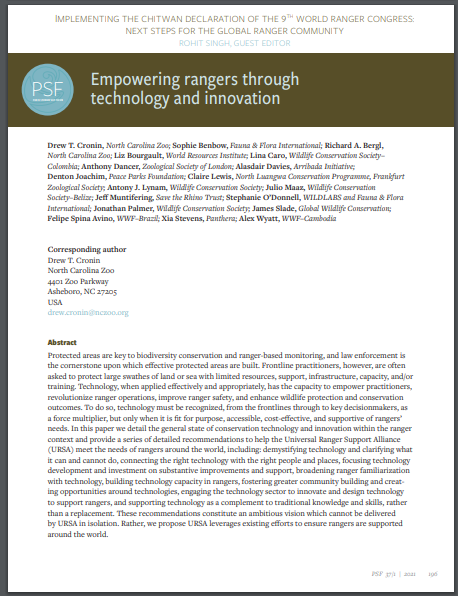Protected areas are key to biodiversity conservation and ranger-based monitoring, and law enforcement is the cornerstone upon which effective protected areas are built. Frontline practitioners, however, are often asked to protect large swathes of land or sea with limited resources, support, infrastructure, capacity, and/or training. Technology, when applied effectively and appropriately, has the capacity to empower practitioners, revolutionize ranger operations, improve ranger safety, and enhance wildlife protection and conservation outcomes. To do so, technology must be recognized, from the frontlines through to key decisionmakers, as a force multiplier, but only when it is fit for purpose, accessible, cost-effective, and supportive of rangers’ needs. In this paper we detail the general state of conservation technology and innovation within the ranger context and provide a series of detailed recommendations to help the Universal Ranger Support Alliance (URSA) meet the needs of rangers around the world, including: demystifying technology and clarifying what it can and cannot do, connecting the right technology with the right people and places, focusing technology development and investment on substantive improvements and support, broadening ranger familiarization with technology, building technology capacity in rangers, fostering greater community building and creating opportunities around technologies, engaging the technology sector to innovate and design technology to support rangers, and supporting technology as a complement to traditional knowledge and skills, rather than a replacement. These recommendations constitute an ambitious vision which cannot be delivered by URSA in isolation. Rather, we propose URSA leverages existing efforts to ensure rangers are supported around the world.
Empowering rangers through technology and innovation

